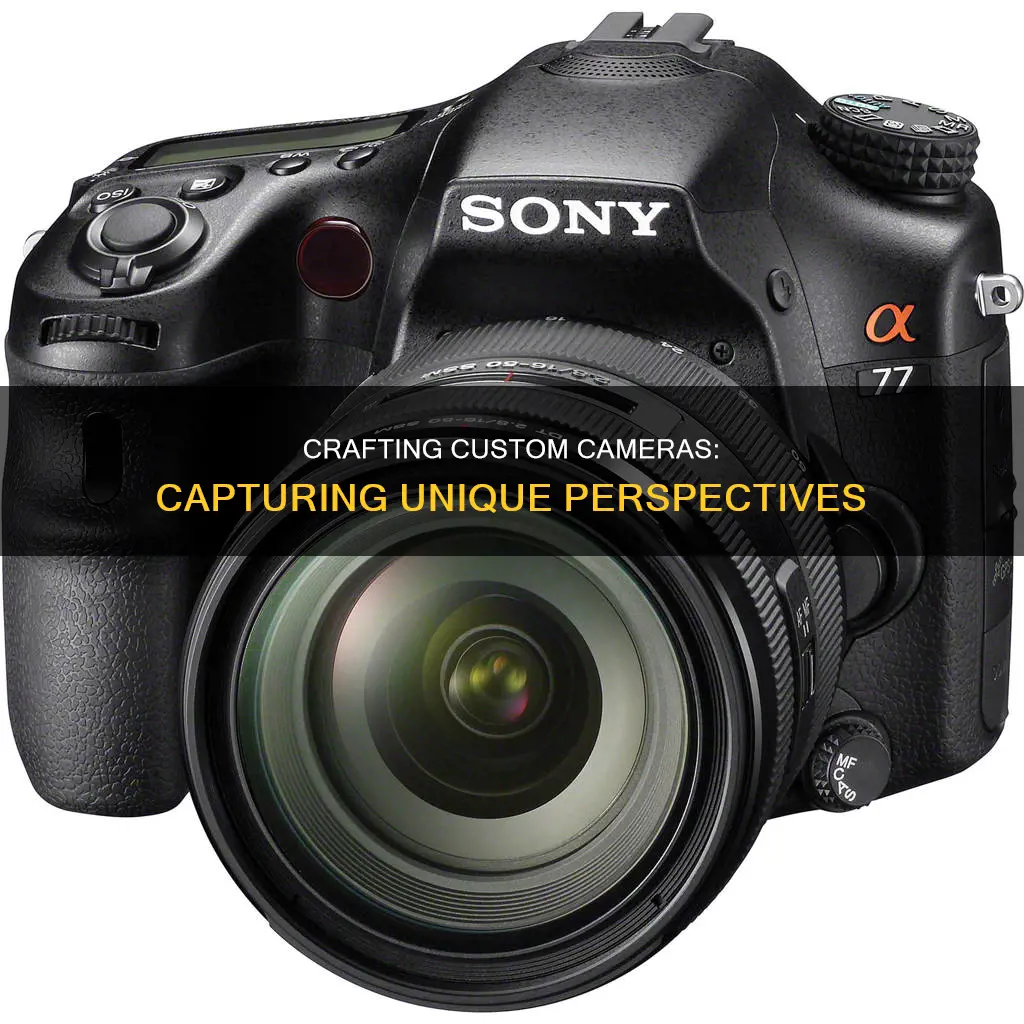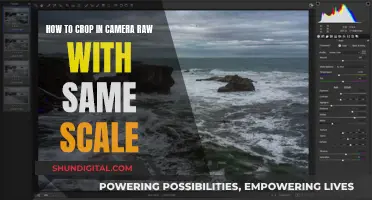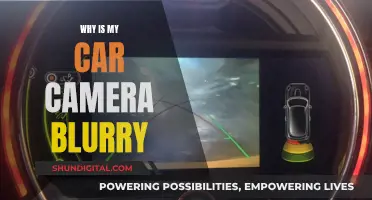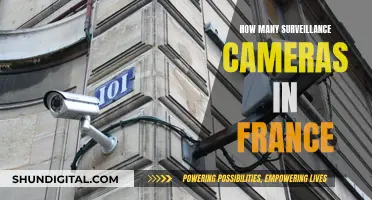
The history of the camera is a story of gradual evolution, from the ancient camera obscura to the modern digital camera. The first true photograph was taken in 1826 or 1827 by Joseph Nicephore Niepce, using a camera obscura – a pinhole camera that projected an inverted image through a small aperture. Niepce called his process heliography and his images were unique artworks that could not be reproduced. However, the invention of roll film in 1889 by George Eastman made photography more portable and accessible, paving the way for the snapshot era of do-it-yourself photography. Eastman's Kodak camera, introduced in 1888, was small, handheld, and inexpensive, and it used a roll of flexible film. This revolutionised photography, putting the power to capture and preserve moments in the hands of ordinary people.
| Characteristics | Values |
|---|---|
| Purpose | Capture and store images and videos |
| Technology | Digital or chemical |
| Image Storage | Electronically or on photographic film |
| Image Type | Still or motion |
| Size | Small, medium, or large |
| Use Case | Professional or consumer |
| Portability | Handheld or mounted |
| Shape | Box, cylindrical, or SLR |
| Lens | Glass or plastic |
| Diaphragm | Fixed or adjustable |
| Shutter | Mechanical or electronic |
| Shutter Speed | Adjustable or fixed |
| Viewfinder | Optical or electronic |
| Film Transport System | Manual or automatic |

Camera obscura
A camera obscura is a natural phenomenon where rays of light passing through a small hole into a dark space form an image on the opposite surface, resulting in an inverted and reversed projection of the view outside. The name comes from the Latin translation, "dark room". The phenomenon has been known for thousands of years, with the earliest documented explanation coming from Han Chinese philosopher Mozi around 2,400 years ago.
The camera obscura was used as a drawing aid, with the inverted and reversed image projected onto a surface that could be manually traced. The technology was further developed in the 16th century with the addition of lenses, and in the 19th century, it was adapted to expose light-sensitive materials to the projected image, creating the first photographic cameras.
The camera obscura consists of a box, tent, or room with a small hole in one side or the top. Light from an external scene passes through the hole and strikes a surface inside, creating an inverted and reversed image. The aperture is typically smaller than 1/100th the distance to the screen, and the image becomes sharper as the pinhole is made smaller, although too small a hole will result in a loss of sharpness due to diffraction.
The use of the camera obscura as a drawing aid became popular in the 16th century, with artists using it to accurately represent height, width, depth, and relative position in their work. It is believed that masters such as Canaletto and Rembrandt used the camera obscura, and there is speculation that the Dutch painter Johannes Vermeer used it to capture the incredible detail in his paintings of domestic scenes.
The camera obscura was also used for entertainment, with Arnaldus de Villa Nova using it to project live performances in the 13th century. In the 18th and 19th centuries, it became a useful accessory for the wealthy taking the 'Grand Tour' to make drawings of Italian landscapes or classical ruins.
The camera obscura played a significant role in the development of photography, with the first permanent photograph created by Joseph Nicéphore Niépce in 1826 using a camera obscura. This photograph, "View from the Window at Le Gras," is the earliest known photograph.
Powering Qarlo Cameras: How Many Batteries Do They Need?
You may want to see also

Photographic film
The gelatin emulsion will darken if left exposed to light, but this process is too slow to be practical. Instead, a short exposure to the image formed by a camera lens is used to produce a slight chemical change, proportional to the amount of light absorbed by each crystal. This creates an invisible image in the emulsion, which can be chemically developed into a photograph. In addition to visible light, photographic film is also sensitive to ultraviolet light, X-rays, gamma rays, and high-energy particles.
There are several types of photographic film, including print film and colour reversal film. Print film yields transparent negatives with light and dark areas and colours inverted to their respective complementary colours. Colour reversal film, on the other hand, produces positive transparencies, also known as diapositives or slides.
The speed of the film, or its sensitivity to light, depends on the size of the silver halide crystals in the emulsion. Larger crystals make the film more sensitive to light but also increase the graininess of the resulting image.
Black-and-white film typically has a single layer of silver halide crystals, while colour film has at least three sensitive layers, each incorporating different combinations of sensitizing dyes. During development, the exposed crystals are converted to metallic silver, which blocks light and forms the black parts of the image. In colour film, the by-products of this development reaction combine with colour couplers to form coloured dyes, which make up the coloured visible image.
Camera Charger Problems: De-A11 Edition
You may want to see also

Digital cameras
Building a digital camera from scratch is a complex task that requires a range of skills and resources. While it is possible to create a simple homemade camera, building a DSLR or full-frame digital camera involves advanced engineering and electronics knowledge.
One key component of a digital camera is the image sensor. Sean Hodgins, a YouTuber and creator, built the "digiObscura", a digital camera with a custom 1-kilopixel image sensor. He 3D-printed the camera parts and used a broken Canon lens. Although the camera has limited resolution, Hodgins' project demonstrates the level of customisation and craftsmanship possible in building a digital camera.
Another option for creating a digital camera is to use a Raspberry Pi, a small and highly programmable computer. Becca Farsace, a senior video producer, built a custom digital camera using a Raspberry Pi High Quality Camera and vintage lenses. She encountered challenges with coding but was able to create a functional camera with an external battery pack and a touchscreen for previewing and operating the camera's software.
For those seeking a more straightforward approach, there are companies like Teledyne Lumenera that offer custom camera development services. They can adapt their standard products or create made-to-spec solutions to meet specific application needs, providing custom mechanical, hardware, software, and firmware designs. This option may be particularly useful for those requiring imaging solutions for industrial or scientific markets.
Additionally, there is a vibrant community of hobbyists who share their experiences and knowledge about building digital cameras. Online platforms like Hackaday and PetaPixel feature stories and projects from enthusiasts who have built their own digital cameras, often with unique features and modifications. These resources provide valuable insights and inspiration for those interested in creating their own cameras.
Charging Your Canon Powershot SX40: A Quick Guide
You may want to see also

Camera lenses
There are two main types of lenses: prime lenses and zoom lenses. Prime lenses have a fixed focal length, such as 35mm or 70mm, while zoom lenses offer a range of focal lengths, allowing you to adjust the scene capture without moving the camera or changing lenses.
When choosing a lens, consider the type of photography you plan to do. For example, if you're shooting panoramas, skyscapes, or interiors, a wide-angle lens with a focal length between 24mm and 35mm would be ideal. On the other hand, if you're capturing portraits or candid shots, a short telephoto lens with a focal length between 85mm and 135mm would be more suitable.
The quality of the lens is also important. Higher-quality lenses use better glass and fine-tuning, resulting in sharper, clearer images. Additionally, features like image stabilization, autofocus, and lens hoods can further enhance your photography experience and improve image quality.
Lastly, don't forget to protect your lenses with lens caps and filters, and consider investing in a good camera bag to safely store your equipment.
Low Battery Mode: Impact on Camera Performance and Quality
You may want to see also

Camera manufacturing
The manufacturing process for cameras is intricate and specialised. It involves several steps, from conceptualising the product to assembly and testing. Here is a detailed overview of the camera manufacturing process:
Product Conceptualisation and Design
The first step in manufacturing a camera is to conceptualise the product and identify the target market and consumer needs. This involves extensive research and planning to determine the desired features, specifications, and performance goals for the camera.
Computer-Aided Design (CAD)
Once the product concept is established, designers use computer-aided design (CAD) workstations to create detailed drawings of the camera's configuration and internal workings. This includes selecting the materials, mechanics, electronics, and interfaces with lenses, flash units, and other accessories.
Computer Simulation and Testing
The computer-generated design is then tested using computer simulations to identify any potential issues or areas for improvement. This step ensures that the camera design meets the initial concept and marketing goals and performs as expected.
Prototype Development and Testing
If the camera design passes the computer simulation stage, a prototype is created for further testing and evaluation. This step involves manufacturing a limited number of units and conducting rigorous field and laboratory tests to validate the camera's performance, durability, and functionality.
Manufacturing and Assembly
Once the prototype is approved, the next step is to set up the manufacturing process for mass production. This includes creating detailed specifications, toolmaking instructions, and assembly processes. The camera chassis, shutter assembly, film transport system, lenses, and electronic components are all manufactured separately and then assembled into a finished product.
Quality Assurance and Control
Camera manufacturers implement strict quality assurance and control measures throughout the production process. Each department, from manufacturing to shipping, has its own quality assurance procedures, and there is also company-wide oversight to monitor product quality consistently.
Shipping and Distribution
After the cameras are manufactured, tested, and approved, they are packaged and distributed to retailers or directly to consumers. The cameras are now ready to be used by photographers, both amateur and professional, to capture and preserve moments in time.
Charging the Wyze Outdoor Camera: How Long Does It Take?
You may want to see also
Frequently asked questions
A camera obscura is a natural optical phenomenon where an inverted image of a scene is projected through a small aperture onto a surface opposite the opening. The camera obscura is the precursor of the photographic camera and the word camera means room.
The first camera was invented in 1816 by French inventor Nicephore Niepce. However, the first camera to take a permanent photograph was made in 1826 by Joseph Nicephore Niepce using a sliding wooden box camera.
A daguerreotype is an early form of photo camera that produces positive images. The process was invented by Louis Daguerre in 1839 and involved exposing a plate with a thin film of silver iodide to light for minutes or hours. A calotype, on the other hand, is a process invented by Henry Fox Talbot in the 1830s that uses writing paper soaked in table salt and brushed with silver nitrate to capture images. Calotypes produce negative images and require less exposure time than daguerreotypes.
The first roll film camera was invented by American entrepreneur George Eastman in 1888 and was called "The Kodak". It used a single roll of paper or celluloid film and cost only $25.
A digital camera captures and saves photographs on digital memory cards or internal storage instead of using film. The first digital camera was created in 1951, but the first commercially available portable digital camera was sold in Japan in 1989.







